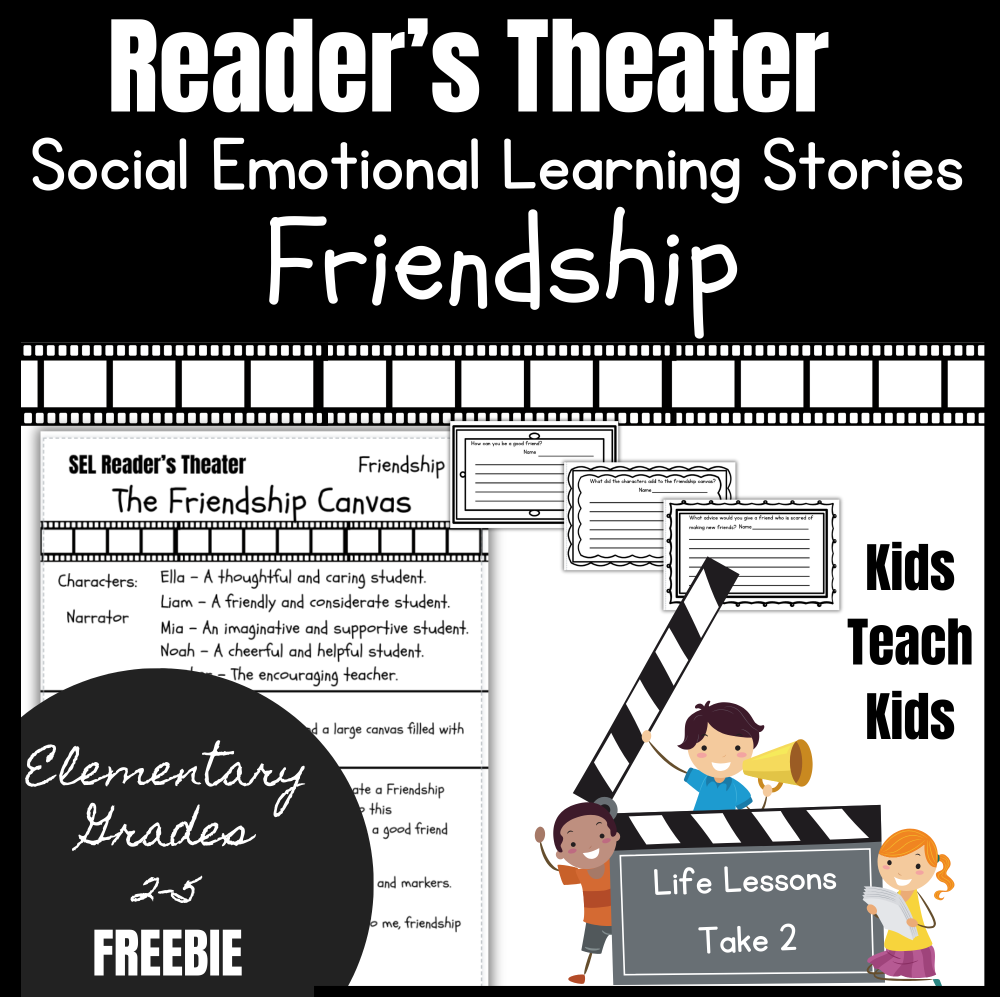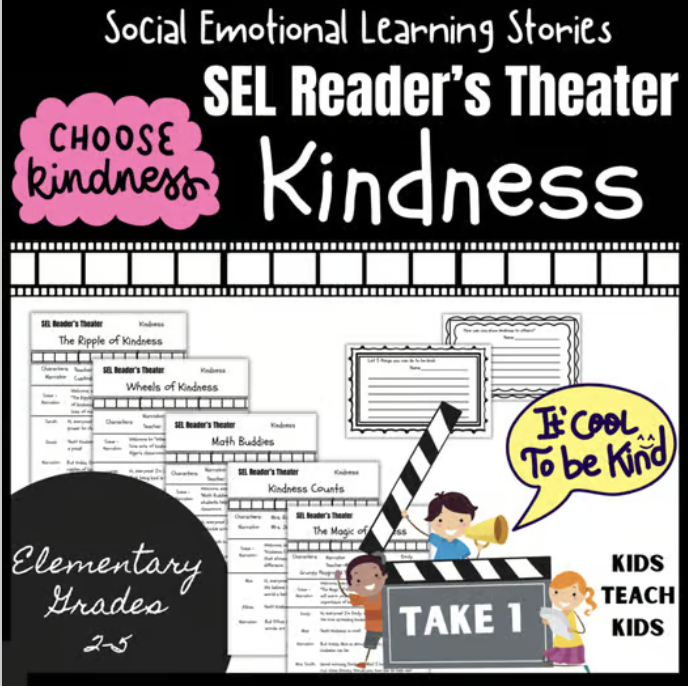I’m going to let you in on a little secret that can transform your classroom into an energetic stage of imagination and learning. It’s called reader’s theater, and it’s not just play – it’s a research-backed approach that’s reshaping the landscape of literacy education.
At its core, reader’s theater involves students performing a script derived from literature, without the need for costumes, props, or memorization. This simplicity makes it incredibly accessible. But beyond accessibility, reader’s theater also deeply engages students of all ages and learning profiles by blending reading practice with performance.
Reader’s Theater topics include holiday and seasonal scripts, social emotional stories, social studies and science scripts such as test taking skills, bees and inventors. To try a FREE copy of a Reader’s Theater Play about Friendship, check it out on Teachers Pay Teachers or click the image below.
 You’re going to find out about how Reader’s Theater caters to visual, auditory, and kinesthetic learners alike. Visual learners appreciate the vivid imagery that comes to life through performance, while auditory learners benefit from hearing the text read aloud. Kinesthetic learners get a chance to embody the characters and act out scenes, solidifying their comprehension through action.
You’re going to find out about how Reader’s Theater caters to visual, auditory, and kinesthetic learners alike. Visual learners appreciate the vivid imagery that comes to life through performance, while auditory learners benefit from hearing the text read aloud. Kinesthetic learners get a chance to embody the characters and act out scenes, solidifying their comprehension through action.
Let’s talk results. Schools that integrate reader’s theater often report marked improvements in students’ reading fluency, comprehension, and confidence. Moreover, students gain valuable skills in expression, cooperation, and public speaking – skills that resonate far beyond the classroom walls. Imagine if you had started public speaking regularly when you were young?
Now, consider teachers who have watched quiet students blossom or struggling readers conquer a complex text after stepping into the shoes of a character. These are the small victories reader’s theater scripts contribute to, setting the stage for a more dynamic learning experience.
So, if the premise of reader’s theater excites you and you’re itching to see these outcomes in your classroom, stick around. In the next section, I’ll guide you through a step-by-step process of bringing reader’s theater into your teaching repertoire – from selecting scripts to taking a bow for the performance.
Bringing Down the Curtain: Lasting Impacts of Reader’s Theater
I’m going to wrap this up with a look at the bigger picture of reader’s theater in your classroom. You’ve already seen how to get started, but what outcomes should you expect? Reader’s theater isn’t just about creating an engaging learning experience; it also sets the stage for lifelong skills.
That’s going to include improved reading fluency, since students practice reading aloud regularly. You’re going to find out about increased retention of the material, as acting out scenarios helps cement concepts in young minds. And let’s not forget the big one – a boost in confidence. When kids take on roles and succeed, their self-esteem soars.
In my opinion, the ripple effect of reader’s theater extends beyond the four walls of your classroom. It can foster a love for literature and storytelling that carries into home reading habits and larger school projects. If you want to provide an enriching environment, this is a tool that shouldn’t be overlooked.
Don’t worry too much about getting it perfect on the first try. You can always adjust your approach down the road. The key is to choose something that resonates with you and your students and to be open to the learning process that comes with it.
A lot is happening very quickly in the world of education, and reader’s theater is a strategy I like to leverage. It’s flexible, it’s powerful, and it’s distinctly memorable for your students. Your first attempt doesn’t need to be your last, but it’s important to take that first step.
Just don’t focus too much on perfection. It’s about growth, enthusiasm, and connection. I really hope that you’ll give reader’s theater a spot in your educational toolkit. And I’d love to hear about your experiences, so feel free to share your story in the comments. Let’s keep the conversation going!
